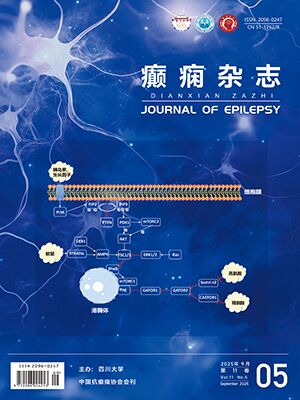| 1. |
Kandratavicius L, Balista PA, Lopes-Aguiar C, et al. Animal models of epilepsy: use and limitations. Neuropsychiatr Dis Treat, 2014, 10(9): 693-705.
|
| 2. |
Levesque M, Avoli M. The kainic acid model of temporal lobe epilepsy. Neurosci Biobehav Rev, 2013, 37(10 Pt 2): 2887-99.
|
| 3. |
Curia G, Longo D, Biagini G, et al. The pilocarpine model of temporal lobe epilepsy. J Neurosci Methods, 2008, 172(2): 143-57.
|
| 4. |
McNamara JO, Byrne MC, Dasheiff RM, et al. The kindling model of epilepsy: a review. Prog Neurobiol, 1980, 15(2): 139-59.
|
| 5. |
Becker AJ. Animal models of acquired epilepsy: insights into mechanisms of human epileptogenesis. Neuropathol Appl Neurobiol, 2018, 44(1): 112-129.
|
| 6. |
Marchant NJ, Whitaker LR, Bossert JM, et al. Behavioral and physiological effects of a novel kappa-opioid receptor-based DREADD in rats. Neuropsychopharmacology, 2016, 41(2): 402-409.
|
| 7. |
Armbruster BN, Li X, Pausch MH, et al. Evolving the lock to fit the key to create a family of G protein-coupled receptors potently activated by an inert ligand. Proc Natl Acad Sci U S A, 2007, 104(12): 5163-5168.
|
| 8. |
Campbell EJ , Marchant NJ. The use of chemogenetics in behavioural neuroscience: receptor variants, targeting approaches and caveats. Br J Pharmacol, 2018, 175(7): 994-1003.
|
| 9. |
Alexander GM, Rogan SC, Abbas AI, et al. Remote control of neuronal activity in transgenic mice expressing evolved G protein-coupled receptors. Neuron, 2009, 63(1): 27-39.
|
| 10. |
Goldenberg AM, SchmidtS, MitelmanR, et al, Localized chemogenetic silencing of inhibitory neurons: A novel mouse model of focal cortical seizures. Bio Rxiv , 2020.11. 04.367862.
|
| 11. |
Boyden ES, Zhang F, Bamberg E, et al. Millisecond-timescale, genetically targeted optical control of neural activity. Nat Neurosci, 2005, 8(9): 1263-1268.
|
| 12. |
Osawa S, Iwasaki M, Hosaka R, et al. Optogenetically induced seizure and the longitudinal hippocampal network dynamics. PLoS One, 2013, 8(4): e60928.
|
| 13. |
Khoshkhoo S, Vogt D, Sohal VS, et al. Cell-type-specific roles for GABAergic interneurons in a mouse model of optogenetically inducible seizures. Neuron, 2017, 93(2): 291-298.
|
| 14. |
Cela E, McFarlan AR, Chung AJ, et al. An optogenetic kindling model of neocortical epilepsy. Sci Rep, 2019, 9(1): 5236.
|
| 15. |
Huynh TD, Ashraf O, Craig H, et al, Optogenetic activation of CA1 pyramidal neurons in vivo induceshypersynchronous and low voltage fast seizures. Bio Rxiv 2020.09. 08.288605.
|
| 16. |
Gomez JL, Bonaventura J, Lesniak W, et al. Chemogenetics revealed: DREADD occupancy and activation via converted clozapine. Science, 2017, 357(6350): 503-507.
|
| 17. |
Forcelli PA. Applications of optogenetic and chemogenetic methods to seizure circuits: Where to go next? J Neurosci Res, 2017, 95(12): 2345-2356.
|
| 18. |
Cela E and Sjostrom PJ. Novel optogenetic approaches in epilepsy research. Front Neurosci, 2019, 13: 947.
|
| 19. |
Choy M, Duffy BA, and Lee JH. Optogenetic study of networks in epilepsy. J Neurosci Res, 2017, 95(12): 2325-2335.
|




